- Home
- Bill Bryson
The Road to Little Dribbling Page 32
The Road to Little Dribbling Read online
Page 32
Morecambe Bay may be the most beautiful bay in Britain. Thanks to the tides, it drains more or less completely twice a day. You can be standing on sand that a short while before was under thirty feet of water and vice versa. It’s the vice versa that you have to worry about because the tide comes back in very quickly, not in a line like an advancing army, but in fingerlets and channels that can easily surround you and catch you by surprise. People sometimes go for walks, then belatedly notice that they are on a giant, but steadily shrinking, sandbar. The worst incident was in February 2004 when at least twenty-one cockle pickers – nobody knows the actual number because they were all illegal, undocumented immigrants from China – were caught out in the bay and drowned when they misjudged or misunderstood the tides. They were paid 9p a pound for cockles.
Some years ago, I made a television series based on Notes from a Small Island, which necessitated travelling around the country for a couple of months with a film crew. One day we arrived in a place I didn’t recognize.
‘Where are we?’ I asked.
‘Barrow-in-Furness,’ replied my friend the producer Allan Sherwin in a sunny tone. Over the course of our weeks together, I learned that producers’ minds don’t work like normal people’s minds.
‘Why are we in Barrow-in-Furness, Allan?’ I asked.
‘Couldn’t get Bolton, mate,’ he said.
‘I beg your pardon?’
‘We couldn’t get permission to film in Bolton.’
‘So you chose Barrow-in-Furness instead?’
He frowned thoughtfully, then counted off his reasons on the fingers of one hand. ‘It’s a northern town. It’s industrial. It’s depressed. It starts with a B. That ticks the boxes, doesn’t it?’
‘I’ve never been here, you know. I didn’t write about it in my book.’
‘Yeah, but they’ll let us film here,’ he explained patiently, and gave my arm a friendly squeeze. ‘You’ll think of something to say. It’ll be great.’
So we filmed for a day in Barrow-in-Furness, and I don’t remember a single thing about it. I thought I would have a quick look around now, as I was in the neighbourhood, to see if any of it came back to me.
Barrow is just about the most out-on-a-limb, end-of-the-line place in England. It inhabits its own peninsula and is miles from anywhere along slow roads. Once it was a seat of industry – for a while its steel mill, now long gone, was the biggest in the world – but these days it is famous for being forgotten and depressed. On a sunny morning, it didn’t look so bad. I parked on the edge of the business district and had a walk around. The streets were broad and clean and lined with imposing red sandstone buildings, reminders of its age of greatness. At each corner was a roundabout with flowerbeds and a statue of some forgotten worthy, but I couldn’t read the inscriptions from across the road and wasn’t about to venture into the speeding traffic to get a closer look just to find that I was beholding a statue of Josiah Gubbins, inventor of the cat flap or flat cap or whatever. At all events, around the periphery Barrow looked OK – clean, reasonably prosperous, respectful of its past. But as I penetrated further into the centre it became increasingly bleak.
The heart of the business district was a long, curving pedestrianized street, and it was fairly busy, though it seemed to be more a place for congregating than for shopping. Groups of men, nearly all tattooed and dangerous-looking, hung out in clusters of four or five, giving the area something of the air of a prison yard. Every second or third building had a For Rent sign on it. A darkened shop called Savers, a discount toiletries chain, had a sign in the window inviting us to call at their nearest branch in Morecambe. When you are invited to go to Morecambe for a better shopping experience, you know you have touched bottom.
I stopped at a Costa coffee bar and suddenly, rather startlingly, I was in a world of well-dressed, employable people. I had a refreshing cup of coffee, then stepped back out into the prison yard, walked to the far end of the pedestrian precinct, into a kind of forest of For Rent signs and men with genetically fierce dogs straining on leads, and concluded that I had pretty well exhausted the possibilities for amiable diversion in central Barrow-in-Furness. So I returned to the car and headed for the more familiar Cumbria, the one with sheep and green hills and dogs you can pet without losing a hand.
Chapter 23
The Lakes
IN 1957, BRITAIN was doing awfully well at a lot of things. It still produced about a fifth of all the world’s manufactured goods. It owned the world’s land, sea and air speed records, and now once again held the record for the mile run: Derek Ibbotson won it back from the Australian John Landy with a time of 3:57.2 in July.
Britain’s aviation industry was the greatest in the world outside the United States. Ferranti’s Atlas computer was the world’s most powerful mainframe – more powerful than anything even IBM had. Britain had just built a hydrogen bomb – something beyond the fiendish wits of all other nations except the United States and USSR. And at Calder Hall at Sellafield, on the Cumbrian coast, it had installed the world’s very first working nuclear power station.
I hadn’t realized quite how extraordinary Britain’s nuclear achievements were until I did a little reading before this leg of the trip. It turns out that in 1944, as the Second World War was winding down, Winston Churchill and Franklin Roosevelt signed an agreement pledging to share information on the development of nuclear weaponry and energy after the war. But then Roosevelt died, and two years later Congress passed the McMahon Act, making it a crime punishable by death to give any information on nuclear reactions, peaceable or otherwise, to any third party, including Britain. So Britain had to develop its nuclear industry and hydrogen bombs wholly independently. That it did so successfully and quickly was a signal achievement.
So as 1957 got under way Britain was on top of the world. But then it all fell apart, and it was at Sellafield (then known as Windscale) that the unravelling began. In October 1957, during routine maintenance, a reactor overheated and caught fire, and it quickly became evident that no one knew what to do. The reactor cores at Sellafield were air-cooled. That was supposed to ensure that they never overheated. Since overheating was not supposed to happen, no contingency plan had ever been considered. Cooling the reactor with air now would just fan the flames. The only possible alternative was to hose the core down, but nobody knew what would happen if water were poured on to a hot nuclear core. The fear was that the water would cause a massive detonation – effectively a nuclear explosion – sending radioactive material high into the stratosphere and causing chaos across Europe and the North Atlantic. At a minimum, the Lake District would need to be evacuated, and several hundred square miles of Cumbria would be placed off-limits to humans for years, if not decades. One of the loveliest landscapes in the world would be lost for at least a generation. The cost to Britain, in prestige and reparations, would have been colossal.
In the event, the water solution worked, and there was no great disaster. Some churns of milk had to be poured away and sheep glowed for a few years, but all in all it was a lucky escape. But it was also a disastrous PR blow, and it meant that nuclear energy would never be trusted or embraced in Britain as it was in France.
I have to say I haven’t trusted the nuclear industry one bit since I read an article in the New Yorker some years ago about the giant Hanford facility in Washington state. Hanford may be the single most irresponsible achievement of modern man. Between 1943 and 1980, Hanford released millions of litres of liquid waste containing strontium, plutonium, caesium and sixty-three other dangerously toxic substances into the groundwater of the Columbia River basin. Sometimes these releases were careless and accidental, but more often they were intentional. The Hanford engineers did this and then shamelessly insisted the water was wholesome and clean, and cited tests on salmon as an example of how safe it was, arguing that a person would have to eat a hundred pounds of salmon at a sitting to ingest enough radiation just to reach detectable levels. What they knew but didn’t say wa
s that salmon don’t eat when they are in the Columbia River. They come there only to spawn, and salmon don’t eat when spawning, and in any case are not there long enough to absorb significant quantities of radiation. However, as the scientists well knew but failed to say, other types of aquatic life – crustacea, plankton, algae and all the permanent fish – had concentrations of radioactivity that were on average 100,000 times greater than natural levels. What a lovely bunch of people.
I read all this in pained astonishment – I honestly didn’t know that Americans could be so deceitful to other Americans – and hoped the British example would be better. In fact, no, or at least not by much. British nuclear authorities were perhaps less callous but no less hypocritical. In 1972, Britain joined the other nuclear powers of the world in signing up to something called the London Convention, which prohibited the dumping of high-level radioactive wastes at sea from ships. But the agreement didn’t mention pipelines, so Britain pumped unknown tonnes of dangerous wastes straight into the Irish Sea without any idea, or evident concern, as to the consequences. By the late 1980s, according to Jacob D. Hamblin, an environmental scientist at Oregon State University, the company running Sellafield had exposed the whole of Europe to more radiation than ‘the combined levels of exposure from … all other nuclear sites, weapons testing, the Chernobyl accident, and packaged solid wastes’, all while claiming to be a virtuous adherent of the London Convention.
There is still a lot of other toxic stuff at Sellafield, including the world’s largest stockpile of plutonium (twenty-eight tons of it), but nobody knows exactly what is lying around the place because record keeping was so poor. According to the Observer, Building B30 at Sellafield is the most hazardous building in Europe. The building next door is the second most hazardous. Both are filled with slowly decaying fuel rods and old, contaminated hunks of metal and machinery.
In June 2014, the UK Nuclear Decommissioning Authority, an ominous-sounding body if ever there was one, announced that the cost of cleaning up the nuclear waste at Sellafield would be £79.1 billion. John Clarke, the group’s chief executive, told the Financial Times, ‘Now we have to figure out what’s in these facilities and how to get it out.’
I think I can help you there, Mr Clarke. It’s half a century’s worth of lethal, irradiated gunk that should, at the very least, have been recorded as it was being deposited. Clarke described the process facing him as ‘a journey of discovery’, which is not exactly what you want to hear with a nuclear clean-up operation.
The upshot is that whatever benefits Sellafield gave the nation during its relatively short working life, the economic costs have been vastly greater, with the additional consideration that we now have heaps of lethally polluted materials that will remain dangerous for, oh, millions of years. I am no expert, but it does seem on the face of it that human beings are not quite grown up enough yet to be entrusted with nuclear fuels.
When I filmed the Notes from a Small Island television series in the late 1990s, we went to the Sellafield visitor centre. It was a smart, high-tech museum confidently extolling the safety, reliability and excitement of atomic energy. I remember it as being rather fun, if a little heavy on the propaganda. It was perhaps the only place in the world where plutonium was portrayed as lovable. At the time of my visit, Sellafield received 200,000 visitors a year, but those numbers evidently dwindled away in the following years. When I drove up to Sellafield’s main gate now, hoping to refresh myself on the wonders of atomic energy, the man in the booth told me that the visitor centre closed in 2012.
Nonplussed, I drove on to St Bees.
St Bees is both a village and a private school occupying handsome buildings on spacious grounds. I don’t know if it is a good school or not, but I can say that a list of its famous alumni consists of Rowan Atkinson and nobody else. I had always envisioned St Bees himself as a kindly soul in a beekeeper’s veil – adored by his insects, the patron saint of honey – but in fact St Bees was a woman, an Irish princess, who fled to this corner of Cumbria to escape an enforced marriage with a Viking. She had nothing to do with bees at all. Her name was really Bega, and it just became corrupted over time. Some authorities believe she didn’t actually exist.
The village of St Bees is the western end of the famous Coast-to-Coast Walk from the Irish Sea to the North Sea, and so tends always to have at least a few hikers about, looking either fresh and keen or slightly shellshocked, depending on whether they are beginning or ending their trek. The only other time I have been in St Bees was in 2010 when I went on a charity hike across the Lake District organized by my friend Jon Davidson. Jon is a professor of geology at Durham University, but not at all boring about it. (Well, actually sometimes he is a little boring about it, when he spies a novel schist or something.) In 2006, Jon’s son Max, who is my greatest hero on Earth, got leukaemia at the age of four. Not long afterwards, Jon got leukaemia, too. Jon didn’t contract his leukaemia from Max or anything like that – it was a different strain altogether – so it was just a magnificently unfortunate coincidence. How unlucky is that? Happily, and wonderfully, both have recovered and in 2010 Jon set up something called the Max Walk to raise funds for leukaemia and lymphoma research. The idea was for Jon and his old friend Craig Wilson to do the 190 miles of the Coast-to-Coast Walk from west to east, and for other of their friends to join in for all or part of it. I could only fit in the first three days, but that took us right across the Lake District from the coast at St Bees to Patterdale – 42.4 miles. It was absolute murder, but the weather was glorious and I don’t think I have ever encountered so much continuous beauty while clutching my heart and begging for mercy.
I went to the sea now to revisit the setting-off point, and walked a way along the breezy headland towards an old lighthouse, but it was getting late and I was hungry, so I returned to my guesthouse and had a shower, then repaired to the Queens public house in search of refreshment. The Queens was agreeably quiet as it was a weeknight. A couple sat at a table with cutlery, obviously waiting for food to come, and there were two men at the bar, but that was about it. I ordered a beer and then asked if I could order food, too. The man behind the bar made a grave face. ‘It’s going to be at least an hour. We’re a bit stretched tonight.’
‘But there’s nobody here,’ I said with a hint of sputter.
The barman nodded grimly towards the kitchen. ‘Chef’s on his own out there,’ he said as if he were crawling on his belly through enemy fire. Some other people came in and enquired about food but were sent away. What is it with pubs and food these days? I drank my beer, then went across the road to the Manor House Hotel, but it was very busy and there didn’t seem to be anywhere to sit. So I walked into the village where there was one other option, a bistro called Lulu’s, and I dined there. I don’t know quite what to say other than that the food was beautifully described on the menu.
Afterwards, reluctant to turn in, I went for another stroll and liked St Bees no less by night than by day. Every little terraced cottage emitted a cosy glow of light through drawn curtains. The one discordant note was that the village shop had heavy security shutters over the door and windows, as if they felt they might need to repel a raid by Rommel’s tank corps. Nothing gives a more crushing air of distrust than a shop battened down under metal. It is bad enough seeing it on the streets of Hackney or Toxteth, but it really shouldn’t be allowed in a country village. It just shouldn’t.
In the morning, I returned to the coast road, high above the Irish Sea. Few visitors to the Lake District bother to go to the coast, but it is an interesting experience. On one side, you have long views down to the sea; on the other, steep lakeland fells of immense and daunting beauty; and in between you have some of the most straggly and depressed-looking villages you have ever seen – like little fragments of Barrow-in-Furness that have somehow drifted off and washed ashore here. The problem is isolation. Apart from Sellafield, which is being run down, work in the area is scarce. But on the plus side, if you are going to live a
life of bleak prospects, you do at least get some stunning views.
I was bound for Keswick by way of Cockermouth when I came to a sign pointing down a side road to Loweswater. I thought I knew the Lake District pretty well, but here was a lake that I had never heard of, as far as I could recall, so I made a sharp turn and went to investigate. The road was narrow and slow but breathtakingly gorgeous. The Lake District, when it is fine, and it usually is at least that, is surely the most beautiful place on earth – and this was as fine a corner as I had ever come across. I had it to myself. Apart from a couple of farmhouses it felt as if no one had been here for years. The road was so narrow that I needed constant vigilance to avoid scraping along a drystone wall, so I kept pulling over and jumping out, just to see the views. Eventually I abandoned the car altogether in a layby and walked about half a mile between the bottom of Loweswater and Crummock Water, a neighbouring lake, through the most sumptuous valley, beneath towering hills, all bathed in sunshine. I never saw another soul. I could have left the car in the middle of the road.
I was now in the heart of the Lake District National Park. To an American, a British national park is an oddity since it isn’t really a park at all, but just an area of land deemed special because it is lovely to behold and has exceptional amenity value for Britain’s three principal countryside activities: walking, cycling and sitting in a car in a layby having a nap. Whereas American national parks are wilderness areas in which no one is allowed to live (apart from a few rangers), national parks in Britain are just normal chunks of countryside with farms and villages and market towns, but with the addition of large numbers of tourists – and in the case of the Lake District it is very large numbers.

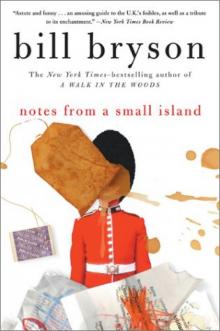 Notes from a Small Island
Notes from a Small Island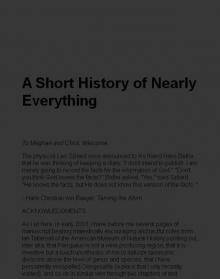 A Short History of Nearly Everything
A Short History of Nearly Everything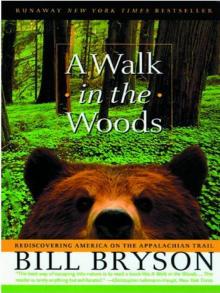 A Walk in the Woods
A Walk in the Woods I'm a Stranger Here Myself
I'm a Stranger Here Myself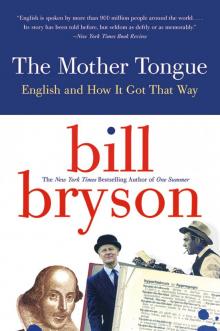 The Mother Tongue
The Mother Tongue Shakespeare
Shakespeare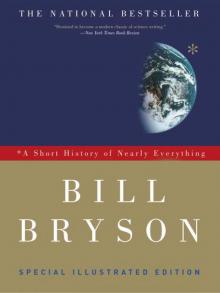 A Short History of Nearly Everything: Special Illustrated Edition
A Short History of Nearly Everything: Special Illustrated Edition The Best American Travel Writing 2016
The Best American Travel Writing 2016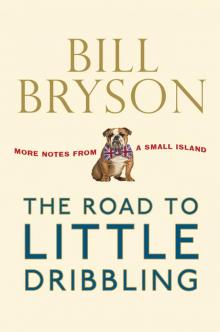 The Road to Little Dribbling
The Road to Little Dribbling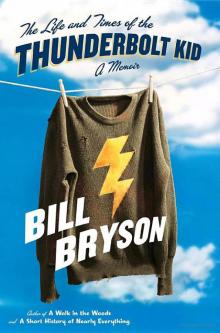 The Life And Times Of The Thunderbolt Kid: A Memoir (v5.0)
The Life And Times Of The Thunderbolt Kid: A Memoir (v5.0)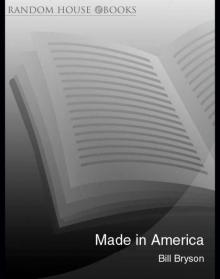 Made In America
Made In America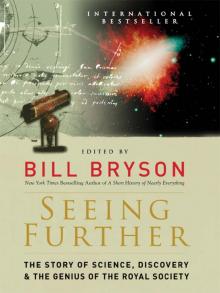 Seeing Further
Seeing Further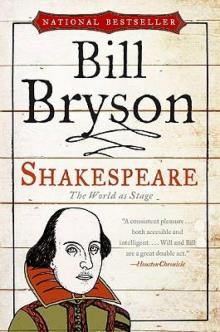 Shakespeare: The World as Stage
Shakespeare: The World as Stage The Life and Times of the Thunderbolt Kid
The Life and Times of the Thunderbolt Kid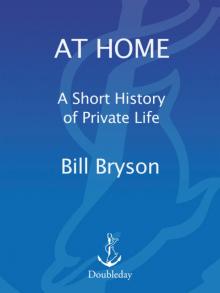 At Home
At Home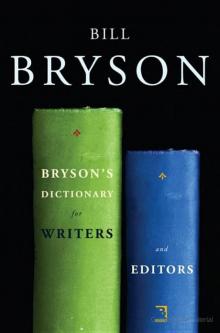 Bryson's Dictionary For Writers And Editors (v5.0)
Bryson's Dictionary For Writers And Editors (v5.0) Neither Here Nor There
Neither Here Nor There Bill Bryson's African Diary
Bill Bryson's African Diary